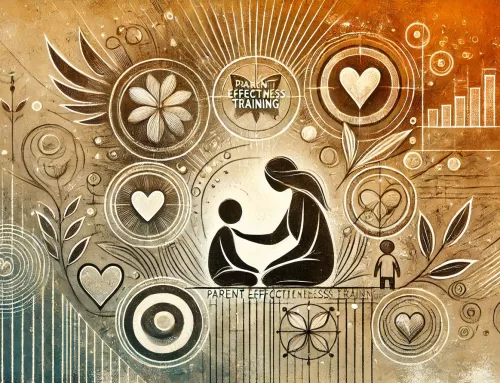Entangled relationships can be as fascinating as they are complicated. They occur when our connections with others are intricately woven together, creating a web that can be both supportive and challenging to navigate. These relationships can involve family, friends, colleagues, and romantic partners, and understanding their dynamics can enhance our personal and professional lives.
In this blog post, we’ll dive deep into the world of entangled relationships. We’ll explore what they are, how they manifest, and provide practical tips for managing them. Whether you’re dealing with a tricky family situation or a complex workplace relationship, understanding these dynamics can help you thrive.
What Are Entangled Relationships?
These relationships are characterized by intertwined connections where the actions, emotions, and decisions of one person significantly affect others. These relationships often involve strong emotional bonds and a high degree of interdependence. They can be found in various contexts:
- Family: Sibling rivalries, parent-child dynamics, and extended family connections.
- Romantic: Relationships where past partners, children, or families are involved.
- Friendship: Groups of friends with overlapping interests and histories.
- Workplace: Professional connections that blend personal and professional boundaries.
The Dynamics of Entangled Relationships
Entangled relationships often feature a blend of positive and negative dynamics. Understanding these can help you navigate them more effectively.
Positive Aspects
- Support Systems: They can offer unparalleled support. In times of need, these connections can provide emotional, financial, and practical assistance.
- Shared Experiences: these relationships often come with a rich history of shared experiences, creating a deep sense of understanding and connection.
- Collaboration: In the workplace, they can lead to successful collaborations due to established trust and mutual respect.
Negative Aspects
- Conflict and Tension: The close nature of these relationships can lead to conflicts and tensions. Misunderstandings and differing expectations can create friction.
- Dependency: High interdependence can sometimes lead to unhealthy dependency, where individuals rely too heavily on each other for emotional or practical support.
- Boundaries: Maintaining boundaries can be challenging, leading to potential burnout or resentment.
Managing Entangled Relationships
Navigating entangled relationships requires a delicate balance of empathy, communication, and boundary-setting. Here are some practical tips:
1. Effective Communication
Open and honest communication is the cornerstone of any healthy relationship. In entangled relationships, it’s crucial to express your feelings, needs, and concerns clearly. Here are some tips:
- Active Listening: Pay attention to what the other person is saying without interrupting. Show empathy and understanding.
- Non-Verbal Cues: Be mindful of body language, facial expressions, and tone of voice.
- Regular Check-ins: Schedule regular times to discuss the state of your relationship and any issues that may arise.
2. Setting Boundaries
Boundaries are essential in entangled relationships to ensure that all parties feel respected and valued. Here’s how to set and maintain boundaries:
- Identify Your Limits: Understand what you’re comfortable with and what crosses the line for you.
- Communicate Clearly: Be direct and clear about your boundaries. Use “I” statements to express your needs (e.g., “I feel overwhelmed when…”).
- Consistency: Enforce your boundaries consistently. It’s important to stand firm to maintain respect and understanding.
3. Conflict Resolution
Conflicts are inevitable in entangled relationships. Handling them constructively can strengthen your connections. Here are some strategies:
- Stay Calm: Keep emotions in check to avoid escalation.
- Focus on the Issue: Address the specific issue at hand rather than bringing up past grievances.
- Seek Compromise: Find a middle ground where both parties feel their needs are met.
4. Self-Care
Taking care of yourself is crucial when managing entangled relationships. Here are some self-care practices:
- Mindfulness and Meditation: Practice mindfulness to stay present and reduce stress.
- Physical Activity: Regular exercise can help manage stress and improve overall well-being.
- Time for Yourself: Ensure you have time for your interests and hobbies outside of the relationship.
Real-Life Examples of Entangled Relationships
Family: Sibling Rivalries
Sibling rivalries are a common example of entangled relationships within families. These relationships often involve competition, jealousy, and conflict, but they can also foster deep bonds and mutual support. Managing sibling relationships involves balancing competition with cooperation and ensuring fair treatment by parents and other family members.
Workplace: Friends as Colleagues
Working with friends can blur the lines between personal and professional relationships. While this can lead to strong teamwork and support, it can also create challenges in maintaining professionalism and objectivity. Setting clear boundaries and communicating openly about expectations can help manage these relationships.
Romantic: Co-Parenting After Divorce
Co-parenting after a divorce is a complex entangled relationship. It requires navigating past romantic feelings, managing shared responsibilities, and prioritizing the well-being of children. Successful co-parenting involves clear communication, mutual respect, and a focus on the children’s needs.
Conclusion
Entangled relationships are an intricate part of our social fabric. They come with their unique set of challenges and rewards. By understanding their dynamics and applying practical strategies for management, we can nurture these connections to enhance our personal and professional lives.
Remember, the key to thriving in relationships lies in open communication, setting and respecting boundaries, effective conflict resolution, and prioritizing self-care. Whether it’s a complex family dynamic or a multifaceted workplace relationship, these principles can help you navigate the entanglements with grace and empathy.
Resources
For further reading and support on managing entangled relationships, consider the following resources:
- The Gottman Institute: Offers research-based advice on building and maintaining healthy relationships.
- MindTools: Provides practical tips and tools for effective communication and conflict resolution.
- Psychology Today: Features articles and resources on relationship dynamics and mental health.
By embracing the complexity of these relationships and approaching them with empathy and understanding, we can create a more harmonious and fulfilling life.
Incorporating these insights and tips can help you better understand and manage the entangled relationships in your life. If you have any questions or would like to share your experiences, feel free to leave a comment below. Let’s navigate this intricate web together!





